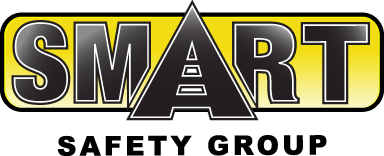What is EMR, and How Does It Increase Profit?
What is EMR?
In general, the Experience Modification Rate (EMR) is a number that insurance carriers use to determine a company’s risk. The higher the risk, the higher the EMR and Workers’ Compensation insurance premiums. In fact, it is somewhat like our credit history. And it follows us everywhere. As such, it can have either a positive or negative impact on your company’s costs and profits.
Further, the EMR is based on your company’s loss history as compared to its industry average. If your company has fewer claims, its EMR will be lower. If it has more claims, it will be higher.
To be specific, the Industry Average is 1.0. But an EMR can range well above or below this value. Though the formula used to find this value is not simple, most important is the impact on your company’s profitability and bottom line. With each increase in a company’s EMR comes an increase in its Workers’ Compensation insurance. But you do not have to accept a high EMR. Ultimately, this report provides a variety of ways to lower BOTH your company’s EMR and Workers’ Compensation premiums.
Who Determines EMR?
In general, the National Council on Compensation Insurance (NCCI) is the entity responsible for calculating the Experience Modification Rating for most states. In fact, NCCI’s Experience Modification Rating consists of two primary elements: Frequency (or Primary Losses) and Severity (or Secondary Losses). However, the criteria for these two elements have changed over the past years as shown below:
Year 1
- Frequency or Primary Losses: Claim less than $10,000
- Severity or Secondary Losses: Claim greater than $10,000
Year 2
- Frequency or Primary Losses: Claim less than $13,500
- Severity or Secondary Losses: Claim greater than $13,500
Year 3
- Frequency or Primary Losses: Claim less than $15,000
- Severity or Secondary Losses: Claim greater than $15,000
How To Lower EMR?
The good news is that you CAN lower your company’s EMR. In most cases, it begins with effective safety practices and programs. They should be directly focused on preventing injuries. But it is inevitable that accidents will happen. However, there are many preventable accidents that occur and get reported. As a result, this increases claims, losses, EMR, and Workers’ Compensation costs.

This can be avoided. How?
First, develop a comprehensive safety program as the first line of defense in preventing accidents. To be clear, a company’s preparedness, responsiveness, and proactive actions focused on the following:
1) Preventing accidents
2) Effectively managing claims as these are best practices to control and lower its EMR.
Further, below are a six (6) simple and highly effective safety practices that can help improve your company’s safety program and performance.
- Written Safety Plan – First, a written safety plan that is easily understood is the foundation of any successful safety program. In general, it should stress that working safely is as important as any other business function. Plus, a written plan will identify what MUST be done to control and mitigate hazards and promote greater safety awareness across the organization.
- Education & Training – Second, an effective safety training program is vital in keeping the workforce up to date on key and current safety topics and practices. Also, it is important to present material in a clear and concise manner. Finally, it is important for workers to show they understood and retained the knowledge through course tests or quizzes.
- Hazard Assessment – Third, conducting thorough hazard assessments (JHA/JSA) helps identify where project and jobsite hazards are located. However, these hazards may change due to the everyday changes of jobsites or operating processes. Thus, this change is what dictates the need for frequent hazard assessments to be conducted. Once hazards are identified, controls must be put in place to correct or mitigate the hazard.
- Inspections & Audits – Fourth, jobsite audit or inspection is the only way to know if workers and workplaces are operating under safe conditions. To summarize, the main purpose is to discover hazards at a jobsite. Then employers should correct them BEFORE they cause an accident or injury. To do this, inspections can be scheduled or performed impromptu. And they should include a checklist.
- Reporting Process – Next, establish a thorough and consistent process to report, record, track, and respond to incidents that identify the hazard. Streamline and centralize the incident reporting process for speed and accuracy in documentation and correction. Also, it is beneficial to provide a system for employees to easily report work site hazards.
- Investigation & Correction – Finally, thorough investigation of accidents is required to determine root cause. Further, the investigation process enables corrective measures/actions to be implemented. This prevents the same incidents from occurring in the future. So, always keep prevention in mind to correct the hazard causing the accident in the first place.
Cost Savings
Usually, a company’s EMR has a direct impact on its operating costs. Specifically, it is in the amount of Workers’ Compensation premiums. For instance, here is an example of this cost is being easily quantified:
A company with an EMR of 1.29 (0.29 above the 1.0 industry standard) would mean the employer has to pay an extra $0.29 per dollar of premiums. If premiums are $100,000 annually, then the employer just lost $29,000 off the bottom line due to its higher injury rate. On the flip side, if a company has fewer injuries and an EMR of 0.71 (0.29 below the 1.0 industry standard) it would receive a premium credit. Considering the same $100,000 annual premium, the company would now save $29,000. This directly contributes to its bottom line. In addition, these savings can help increase competitiveness when bidding new business by not having to carry this unnecessary operating cost.

Summary
In short, the most important factor and benefit from a low EMR is the reduction or elimination of worker accidents and injuries. This translates directly into lower operating costs and higher profitability. In fact, a company with an EMR below 1.0 is saving money every day on every employee through an effective safety program. As a result, this can help eliminate injuries, lower claims and losses, and reduce Workers’ Compensation insurance. In addition, more value is achieved through competitive advantage when bidding on new business and retaining existing business. Not having to pass along higher operating costs in the form of uncompetitive bids is a sound strategy for winning more new business. In summary, from the boardroom to the frontline, everyone wins when an investment in safety saves BOTH lives and dollars.
About SMART Safety Group
Since 2003, SMART Safety Group has protected our client’s workforce and worksites across the U.S. In fact, our Safety Program Management provides the most effective and comprehensive safety solution. To explain, it does the following:
- Reduces incidents and claims
- Ensures OSHA compliance
- Develops the most proactive safety behavior and culture across our client’s organization
Safety Program Management Services:
- Safety Policies
- Jobsite Audits
- 24/7 Incident Response
- Incident Investigation
- OSHA 300 Report Management
- Toolbox Safety Topics
- Health & Safety Training
- Reporting & Documentation
- OSHA Representation
Ultimately, we are an experienced team of “boots-on-the-ground” safety professionals. Further, we provide safety services and support to our client’s 24/7/365. So, contact us today to learn more about our Safety Program Management. It can significantly increase your company’s safety, productivity, profitability, and competitiveness.








